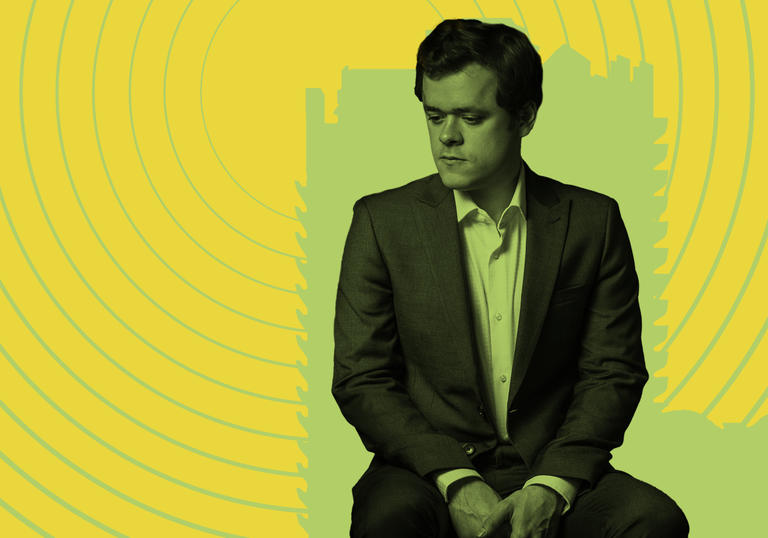Benjamin Grosvenor’s recital today could be seen as an exploration of virtuosity – not merely the overtly fast-fingered kind as found in the outer movements of Alberto Ginastera’s Three Argentinian Dances, Op 2 or the finale of Chopin’s Third Piano Sonata – but in the textural and colouristic demands of Ravel’s Gaspard de la nuit and the subtle complexity of Liszt’s reworking of Schubert’s Ave Maria.
Franz Liszt was famously generous-spirited when it came to his fellow composers, and his many transcriptions were, at least in part, born out of the desire to disseminate their music. This could take the guise of free-form paraphrases on the latest operas by the likes of Verdi, Gounod or Wagner or, in the case of Schubert songs, a conviction that they needed rescuing from the neglect into which they’d fallen since his premature death. Unlike the opera paraphrases, these tend to stick closely to the originals; in the case of Ave Maria, D839 the result is deceptively tricky, demanding that the pianist balance the accompanying lines while breathing life into Schubert’s sublime melody.
The last of Chopin’s three piano sonatas is one of the most defiantly dramatic in the repertoire. He was for a long time misunderstood when it came to larger-scale structures, with his unorthodox approach seen as incompetence rather than innovative genius; but, as formal preconceptions have diminished, so the stature of Chopin’s Second and Third Sonatas has grown, and they are now rightly regarded as among the pinnacles of the piano literature.
The first movement of the Third is characterised by an outpouring of themes, their sheer number threatening to destabilise the form itself. That sense of urgency is continued in the brief second-movement scherzo, a fireball of whispered energy calmed fleetingly by a gentle trio. This is followed by an extended Largo which, after a gruffly rhetorical opening, becomes nocturne-like, with a silvery melody that never loses its graveness, even as Chopin toys with it, winding it sinuously around a rocking accompaniment. Contrast comes with a consoling middle section. The finale begins as rhetorically as the first and slow movements, this time with weighty rising chords that take command of the entire instrument, ending tantalisingly on a dominant seventh chord – classically waiting for resolution. Chopin leaves us hanging, instead introducing a nervously energetic idea and it is this theme, counterbalanced by a ringing motif in B major accompanied by mercurial scales, that dominates the movement. As it builds to fever pitch, Chopin offers us one of the most brilliant and affirmative conclusions to be found in any piano sonata.
The question of how to create an authentically Latin American language was one that much preoccupied composers of the generation before Alberto Ginastera, who was born in Buenos Aires in 1916. The answer, as figures such as the Brazilian Heitor Villa-Lobos and the Mexican Carlos Chávez demonstrated, was to draw on the rhythms and melodies of the folk and popular music of their own countries. How brilliantly Ginastera does this in his first published pieces for piano, written in 1937 while he was still at student. From hearing these you’d never guess that he was not himself an outstanding pianist.
The first of the Argentinian Dances, the ‘Dance of the Old Cowherd’, conjures a remarkably sprightly figure, with the composer fully exploiting the percussive possibilities of the piano. This couldn’t be in greater contrast to the lilting ‘Dance of the Delightful Young Girl’ based on the zamba, a sultry Argentinian dance, which ends with a deliciously crunchy harmony. We’re back to motoric brilliance for the ‘Dance of the Artful Herdsman’, which combines a Prokofiev-like sinew with a whole slew of South American dances, including the macho malambo; Ginastera builds to an overtly thrilling ending, with sweeping upwards and downwards glissandos.
Benjamin Grosvenor ends his recital with Gaspard de la nuit, one of the greatest tone-poems ever written for piano. It’s based on the poetic fantasies of Aloysius Bertrand and is one of Ravel’s darkest works. Much of Gaspard’s intense difficulty is not overt: the ppp opening of ‘Ondine’, with the accompanying figure played by the right hand in a most bunched-up, uncomfortable position is just one instance of many.
In the first piece the water nymph Ondine – a sort of freshwater equivalent of the Greek Sirens – attempts to lure a young man looking out of his window by moonlight to join her in her watery palace. When he protests that he has a mortal lover, she laughs derisively and showers his windowpane with droplets before vanishing. Though Ravel by no means follows the narrative of these poems slavishly, is it possible not to hear that mockery in the close of this piece? Ravel sets the scene in ‘Le gibet’ (The gallows) with an obsessively tolling B flat, which evokes not only an insistent bell but also the lifeless body itself, swaying in the gentlest of breezes. What disturbs most is not the sense of desolation and hopelessness but almost exultant quality at the piece’s centre – as if even in a death as wretched as this, there is beauty too. Finally, ‘Scarbo’: How to depict a shape-shifting gnome? Ravel takes a simple, if ominous, three-note idea and constantly transforms it, even lending it stature and magnificence at one point, though the fluctuating rhythms set up an inherent instability. To what extent the music allies to the poetry is, again, up to the listener, but Scarbo’s abrupt disappearance seems perfectly mirrored by Ravel’s phantasmagorical ending.
© Harriet Smith

